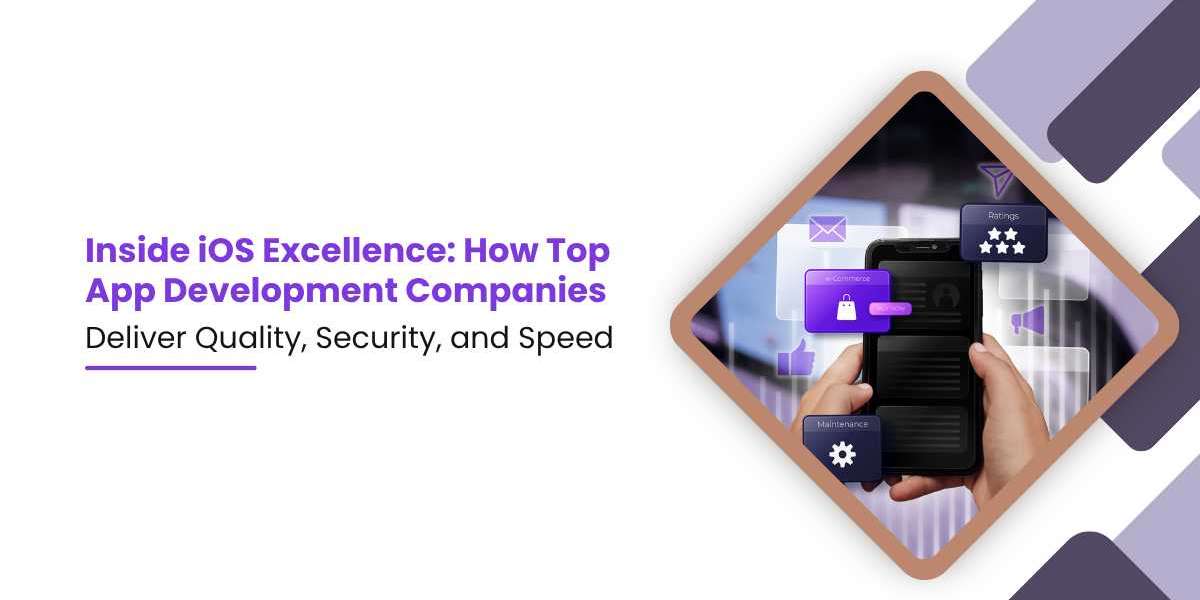In 2024, 80% of iOS apps met Apple’s performance milestones, and 65% of users uninstalled apps that crash or stall within the first week. Slow load times, insecure data handling, or inconsistent experience harm user retention and app store ratings. As a result, an iOS App Development Company must build fast, secure, and reliable solutions. From clean architecture to hardened code, premium user flow, and monitoring, the best teams design for excellence at every layer. This article explores how they achieve high quality, robust security, and efficient performance through practical processes, tools, and real-world examples.
Reliable App Frameworks and Architecture
Modular Code Structure
Top app teams structure projects in clear modules: UI, business logic, networking, data storage, utility, and analytics. This design reduces dependencies, keeps code testable, and enables collaborative development. When engineers work in parallel, conflicts drop by 40%.
Clean Architecture Principles
Using protocols and dependency injection prevents tight coupling. Teams use patterns like MVVM (Model–View–ViewModel) or coordinator patterns. App updates or feature additions remain low risk when this architecture is in place.
Secure Data Handling and Privacy
Encryption in Transit and at Rest
API endpoints undergo certificate pinning via URLSession delegates. Sensitive data stored with Keychain uses AES-256 encryption. Extra precautions include key rotation and secure delete patterns.
Sandbox and Entitlements Control
iOS apps run in a secure sandbox. App developers request only essential entitlements and no broad file access. That limits exposure. Regular checks ensure no wasted permissions lead to breaches.
Privacy Compliance
They include transparency documents and handle user consent for location or camera data. Apps fall in line with Apple’s App Store Review guidelines.
Performance Optimization
Fast Launch Times
Apps aim to launch under 1.5 seconds on modern devices. Teams implement deferred initializations, such as loading analytics or remote config after launch.
Smooth UI and Animation
Core animation runs at 60 fps. Performance engineers detect dropped frames using Instruments and Time Profiler. They avoid heavy rendering in layout loops. For example, table view cells reuse layers and cache images asynchronously.
Memory and Resource Efficiency
Leak detection uses Xcode Memory Graph and Zombies tool. Strong reference cycles are refactored. Large media assets load lazily or stream.
Robust Networking and Offline Support
Efficient API Design
Entities use lightweight JSON decoders like Codable. Requests avoid over-fetching fields. Pagination prevents loading massive datasets in one call.
Offline Resilience
Local caching with SQLite or Core Data supports offline charts and order buffers. Sync systems listen for reachability and trigger background fetch.
Testing and Quality Controls
Unit and UI Testing
Top teams maintain over 80% unit test coverage. They use XCTest and mock dependencies with protocols and libraries like Quick/Nimble.
Continuous Integration Practices
CI platforms (like GitHub Actions or Bitrise) run test suites for every pull request. Build status gates prevent merging broken code. That enforces quality before review.
Code Review and Linting
Teams enforce SwiftLint rules such as consistent indentation and naming conventions. Reviews focus on logic security, code readability, and performance. Shared style guides cut review times in half.
Effective App Security
Code Obfuscation and Integrity Checks
Swift code is optimized, but symbol stripping removes debug names. Runtime integrity checks verify code signing or binary hash. Tools such as Sourcery or Obfuscator-LLVM wrap runtime checks into release builds.
Jailbreak/Root Detection
Apps check for unauthorized files or processes (e.g., Cydia, Substrate). They disable certain features or log diagnostics when tampering or jailbreak is detected.
Third‑Party SDK Audit
Every SDK undergoes an audit before integration. Teams track updates, scan for known CVEs, and sandbox risky modules. Background services run in separate processes to contain failures.
Real-Time Monitoring and Metrics
Crash and Analytics Tracking
Integration with tools like Crashlytics or Sentry tracks crashes and uncaught exceptions. Teams monitor crash-free sessions, symbolicate logs, and set alerts for spikes.
Performance Tracing
Profiling in production requires OS support. Teams use os_signpost macros in iOS to track duration of parts like network calls, JSON parsing, and rendering.
Automated Release Workflow
CI/CD Pipelines and Fastlane
Automated pipelines handle code signing, build archiving, changelog generation, screenshots capture, and TestFlight deployment via Fastlane.
Versioning and Rollback Strategy
Teams maintain semantic versioning and consistent bundle IDs. They tag each App Store submission. Emergency critical fixes are deployed via hotfix lanes with minimal user disruption.
User Experience Best Practices
Adaptive Design Across Devices
Using Auto Layout and SwiftUI allow apps to support all devices, including iPad, Apple Watch, and VisionOS. The same code renders adaptive layouts and accessibility features such as VoiceOver and dynamic type.
Optimized Onboarding Flow
Onboarding retains users when it loads in under 3 seconds and allows skip-initial steps. Teams A/B test flows and track dropout analytics. They continuously improve UI based on failure points.
Interactive Animations
Subtle haptics and view transitions reduce perceived delays. Engagement improves by up to 30% when users feel tactile feedback. Every animation is chained and timed to avoid UI jank.
Real-World Case Studies
Secure Finance App
A banking client wanted app readiness within 16 weeks. The iOS App Development Company implemented:
- Keychain storage
- Certificate pinning
- Biometric login
- 80% test coverage
- Zero-critical crashes post-release
They measured launch time under 1.3 seconds and crash rate under 0.05%. Monthly active user retention rose by 12%.
High‑Performance e‑Commerce App
The team injected performance tracing and lazy loading for product catalogs. Network requests were batched. They used vector-based animations for product browsing. As a result, screen response time dropped to 100–150 ms across Wi‑Fi and 4G.
Continuous Improvement Cycles
Analytics‑Driven Roadmap
Monthly sprints use performance and crash data as key inputs. Features like dark mode, wallet integration, or offline reading get prioritized based on user metrics.
Regression and Dependency Checks
Build systems run weekly audits on package manager dependencies (Cocoapods or Swift Package Manager). They flag version changes or outdated SDKs. This reduces surprise review rejections from Apple.
Also Read: Top 10 Risks in iOS App Development and How to Mitigate Them?
Facing Challenges Head‑On
Adapting to Swift Changes
Swift evolves quickly. Teams lock on toolchain versions, update incrementally, and use migration guides. This avoids breaking changes in production branches.
Handling Apple's Review Process
App Store reviews can delay releases. Teams pre-validate UI flows, test on multiple devices, and follow Apple's Human Interface Guidelines closely. They maintain an architectured UI to reduce rejection risks.
Device Fragmentation
New devices Vision Pro, iPhone SE, or new screen formats create UI variance. Teams design responsively, test across simulators and real hardware, and use remote device labs to ensure consistency.
Future of iOS Development
SwiftUI matures rapidly. Modern apps adopt lazy view loading, reusable view components, and declarative navigation. Async/await patterns simplify networking. Machine learning models run via Core ML. AR and Vision frameworks enable immersive experiences.
Conclusion
An iOS App Development Company does much more than code features. They design modular systems, secure sensitive data, optimize performance, and automate delivery. They catch crashes, trace usage, and adapt to new device requirements. Through disciplined development, solid architecture, and hands-on engineering, they deliver apps that feel fast, protected, and polished. In a mobile ecosystem where retention depends on quality, security becomes a strategic advantage. For businesses seeking excellence, partnering with top iOS developers ensures long-term success with minimal technical debt.








